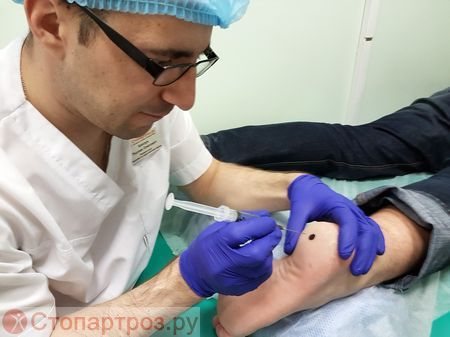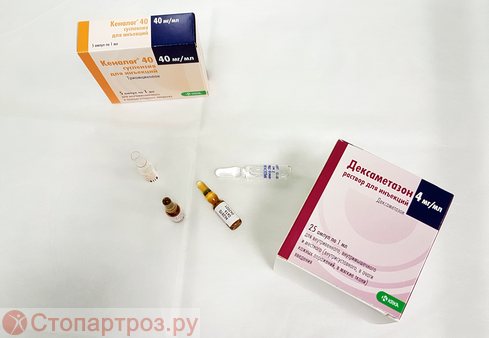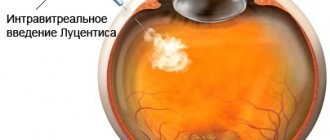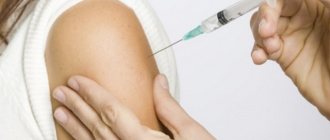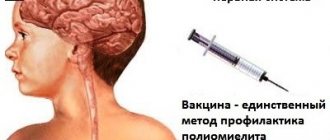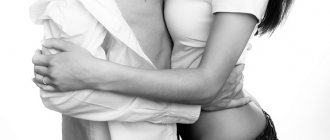Content
- Heel injection for heel spurs
- Who carries out the treatment?
- Why do they contact us?
- Reviews from our patients
- Sign up for treatment
Pain levels
0 — 3
Mild pain
- does not interfere with everyday activities, but you can adapt to the pain.
4-6
Moderate pain
- prevents you from doing business, prevents you from concentrating, the patient remains independent
7-8
Strong pain
- it is impossible to carry out daily activities, it is difficult to think about anything other than pain, the patient cannot function independently
9-10
Unbearable pain
- requires urgent care, bed rest, disables the patient
Folk recipes
Before going to bed, it is good to steam your feet in hot water with the addition of sea salt (3 tablespoons per 1 liter of water). Then apply medical bile to the heel and wrap the foot with plastic wrap. Remove the compress in the morning. The course of treatment lasts until the pain disappears.
Prepare an ointment from the following components: mumiyo powder (grind 2 tablets), alcohol tincture of cinquefoil (4 tsp), animal fat (1 tsp pork or goose). Mix the ingredients well, apply to a gauze bandage and apply to the heel. Fix for 4 hours. Use daily for 3 weeks.
Moisten gauze, folded 4-5 times, in a bischofite solution and apply it to the heel overnight, securing it well. In the morning, remove the compress and wash off any remaining medication. Use daily, the course consists of 10-15 compresses.
Do baths with turpentine (3 tablespoons per 5 liters of water) daily, immersing your feet in warm water for 20-30 minutes. After this, wipe the skin dry and put on warm socks.
Prepare a mixture of herbs: mallow, stinging nettle, burdock, wormwood (in equal parts). Take 2 tbsp. l collection for 2 liters of hot water. Steam your feet in a warm infusion for 15-20 minutes, then wipe dry and keep warm.
Before using any traditional recipes, be sure to consult your doctor and make sure that all components are well tolerated by the body and do not cause an allergic reaction.
The number of procedures depends on the level of pain
Approximate number of required procedures: 3
Make an appointment
In medicine, this technique is used quite widely, because it helps to effectively fight diseases in the heel area, such as heel spurs. The effectiveness of this technique is evidenced by numerous positive reviews from our patients.
You can get acquainted with them on the same website. Punctures of the ankle joint are also performed.
Preparing for a blockade with a heel spur |
We give an injection |
Sign up for treatment
Prevention
In order to avoid the appearance of heel spurs, you must take the following precautions:
- monitor your weight;
- avoid excessive stress on the feet;
- promptly treat emerging diseases of the joints and spine;
- if you have flat feet, wear only orthopedic shoes or use special insoles;
- If you have a heel injury, be sure to consult a doctor.
In addition to the tips mentioned, self-massage of the feet before bed and walking barefoot will also be useful.
A heel spur can bring significant discomfort to the usual rhythm of life of any person, so it is worth making efforts to remove it at an early stage of its appearance. Self-medication contributes to the initiation of the disease and a long healing period. Timely diagnosis and well-chosen comprehensive treatment will help you get rid of pain and avoid surgical intervention.
Heel injection for heel spurs and other diseases
The injection contains painkillers, steroids, vitamins and homeopathic remedies. All of these drugs lead to significant positive changes: relief from pain, inflammation and swelling. Regenerative processes are stimulated in tissues, and the person feels better.
To relieve severe pain, use a “medicinal cocktail” consisting of at least 2-3 drugs. This simultaneously solves two problems: quickly relieving pain and relieving inflammation.
Most often, a blockade is required for a spur on the heel. This is a very painful and unpleasant formation, which makes it very difficult to walk. Therefore, timely treatment is especially important for active people, as well as for athletes. In addition, a heel block is also required for bursitis. This is an inflammation of the Achilles tendon in the area where it attaches to the heel.
Accurate injection into the heel spur |
Preparations for blocking heel spurs |
Before performing a blockade or puncture for bursitis, the doctor must clarify the indications. The medical office will promptly give you an accurate diagnosis and, if necessary, block the heel spur. Clinic specialists can perform a blockade at home.
Sign up for treatment with us by phone +7 495 134 03 41
or leave a request on the website.
Author of the article:
Kholikov Timur Vyacheslavovich
Orthopedist
Make an appointment
Recent publications by the author:
- Hip block
- Blockade in the neck
- Knee block
- Blockade at home
Drug treatment
Medicines are intended to relieve characteristic symptoms - inflammation and acute pain.
The following groups of drugs are used:
- Antibiotics, agents based on nimesulide (and its analogues) - indicated in the presence of rheumatoid pathologies - effectively relieve inflammation.
- Anti-inflammatory non-steroidal agents for external use (ointment, cream, gel) - intended for local application, reduce discomfort, inhibit the inflammatory process and relieve swelling.
- Steroids for external use - hormone-based ointments are used in cases of severe inflammation that cannot be relieved with weaker medications.
- Injections of hormonal drugs (local) - the injection is painful, as it is injected directly into the most damaged point. Hormones are combined with an anesthetic (Betamethasone, Novocaine) and used in particularly difficult cases. The result is noticeable after 1 injection, but sometimes repeated administration of the drugs is required. The most popular hormonal drugs for the treatment of heel spurs are Hydrocortisone, Dirospan.
For more effective treatment, medications are supplemented with physiotherapy. Complex use significantly improves the result.
Prices for drug blockades
| Services | Price | Sign up |
| Ankle block | 3000 rub | Sign up |
| Knee block | 3000 rub | Sign up |
| Elbow block | 3000 rub | Sign up |
| Wrist block | 3000 rub | Sign up |
| Interphalangeal joint block | 2000 rub | Sign up |
| Shoulder joint block | 3000 rub | Sign up |
| Heel spur block | 3000 rubles 5000 rubles | Sign up |
| Ultrasound-guided hip block | 4000 rubles 5000 rubles | Sign up |
Our doctors
- LITVINENKO Andrey Sergeevich
Traumatologist orthopedist Sports medicine doctor Experience: 19 yearsSign up
- SKRYPOVA Irina Viktorovna
Physiotherapist rehabilitator Experience: 19 yearsSign up
- MOISEENKO Alexey Yurievich
Traumatologist orthopedist Sports medicine doctor Experience: 17 yearsSign up
- KHOLIKOV Timur Vyacheslavovich
Traumatologist orthopedist Sports medicine doctor Experience: 19 yearsSign up
We recommend reading:
- Heel spur
- Heel spur symptoms
- Heel spur: causes
- Heel spur on the heel: how to treat the disease?
- Where to treat a spur on the heel?
- Modern approaches to the treatment of heel spurs
- How to relieve pain from a heel spur?
- Posterior heel spur: treatment
- Heel spur: diagnosis and treatment
- Spur blockade with diprospan
- Blocking the spur with Kenalog
- Orthopedic insoles for spurs
- Surgical removal of a heel spike
- Heel spur: which doctor should I see?
- Heel spurs: laser treatment
- Drug therapy for fasciitis
- Heel spur: ultrasound treatment
- Heel spur: physical therapy
- Heel spur: taping
- Heel spur: electrophoresis
- Heel spur: hydrocortisone
- Therapeutic exercise (physical therapy)
- Orthopedic instep supports
- Shock wave therapy for heel spurs
More articles →
Causes of heel spurs
The direct cause of heel spurs is plantar fasciitis.
. This fasciopathy is a multifactorial pathology. The onset of the disease and its further progression depends on many factors. Causes of heel spurs include:
- congenital or acquired flat feet;
- chronic injuries and diseases of the joints of the lower extremities and spine, due to which the normal distribution of load over the entire area of the foot is disrupted;
- intensive physical training (both classes with heavy weights and ballet and dance classes);
- overweight;
- age-related changes (hormonal levels, metabolism, as well as the quality of blood supply in the lower extremities);
- pathologies of the musculoskeletal system, internal organs and metabolism (rheumatism, gout, diabetes mellitus and others), as well as autoimmune diseases (rheumatoid arthritis, psoriasis);
- vascular diseases (varicose veins, atherosclerosis of the vessels of the lower extremities and others);
- incorrect gait, uncomfortable shoes (too narrow or high heels);
- professional activities associated with long periods of standing (standing work, courier profession, teachers, etc.);
- factors associated with pregnancy, especially multiple or complex pregnancies;
- prolonged depression, stress and other psycho-emotional causes of heel spurs;
- posture disorders;
- the presence of foci of chronic infection in the body, as well as past infectious diseases;
- long-term use of hormonal drugs;
- the presence of local inflammatory processes in the foot and lower leg;
- hereditary predisposition;
- bad habits;
- sedentary lifestyle;
- individual constitutional characteristics;
- unfavorable environmental situation
The rate of increase in symptoms and growth of the spine is individual in each case and depends on the causes of the heel spur. In the initial stages, there is practically no pain - up to 3-4 years can pass from the onset of the disease to the appearance of pronounced symptoms
. Pain syndrome with heel spurs is formed under the influence of several factors:
- the appearance of microcracks on the heel spur;
- compression of blood vessels and disruption of tissue trophism;
- the presence of inflammation in places where the spur injures the tissue.
The risk group for the disease includes:
- women over 40 years of age and people of retirement age;
- professional and amateur athletes;
- overweight persons;
- patients with a history of injuries and their complications.
Why do they contact us?
- No queues
No need to wait, we work by appointment
- All in one day
Doctor's appointment, diagnosis and treatment on the day of treatment
- Let's relieve the pain
We will help you relieve pain in just 1-2 visits to us
- We guarantee
Professional approach, affordable prices and quality
- Doctor's appointment 0 RUB!
During course treatment all consultations are free
- Three treatment options
We will select several options and offer optimal treatment
